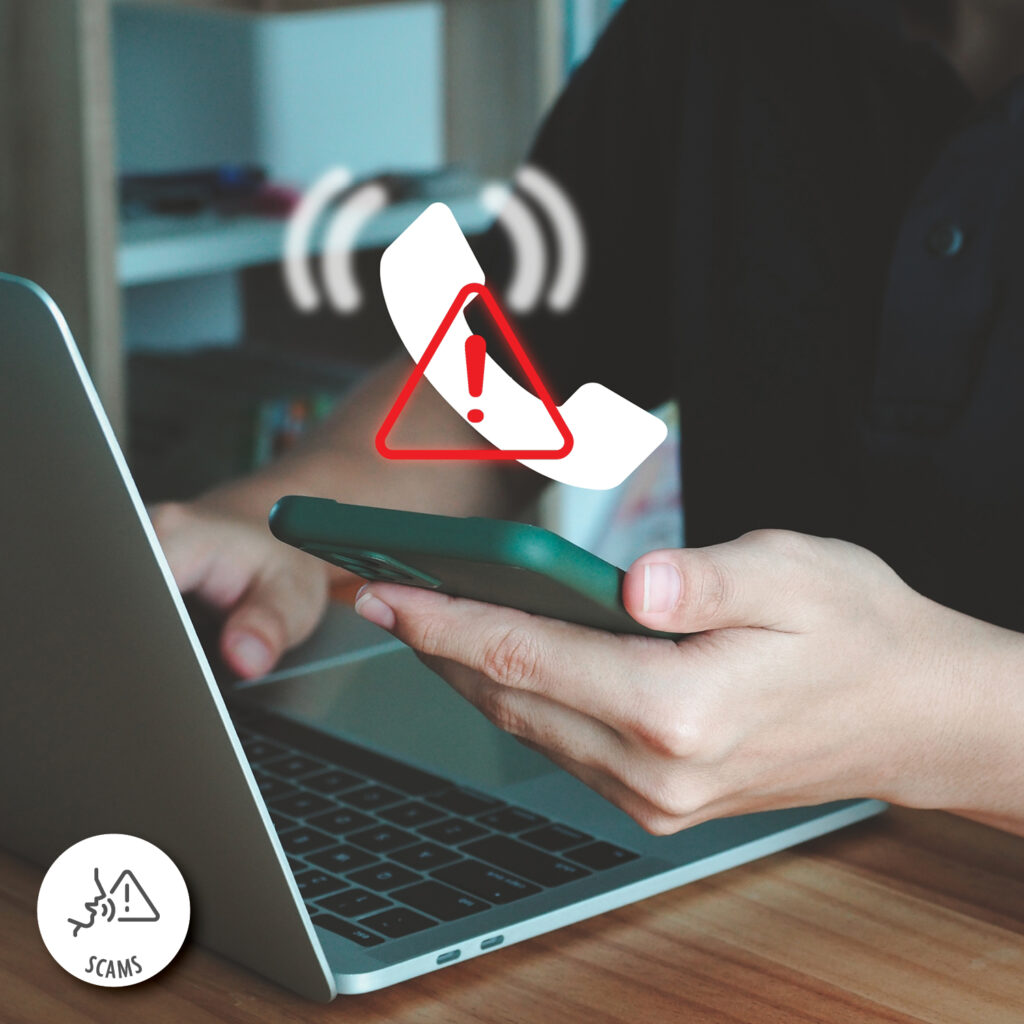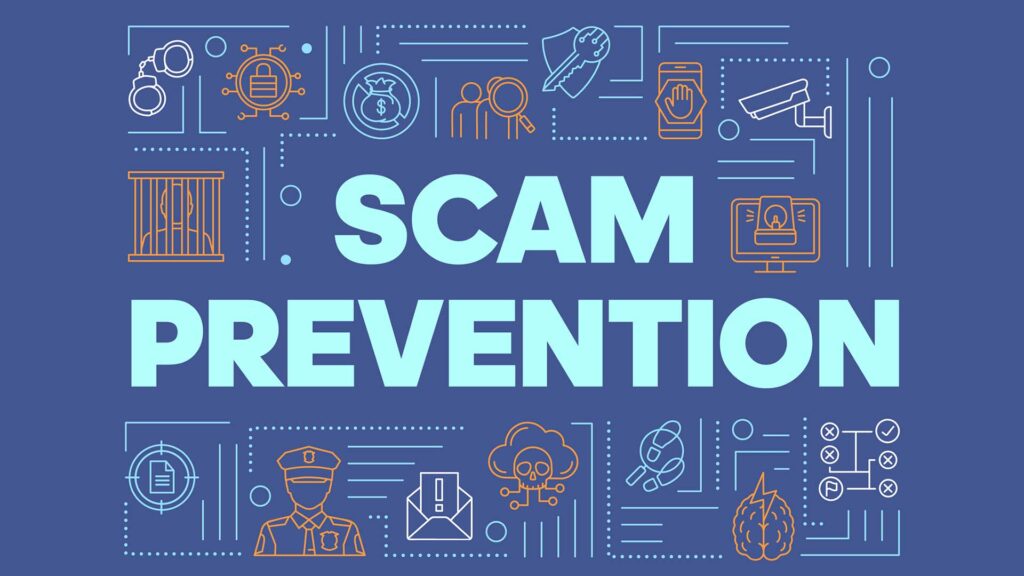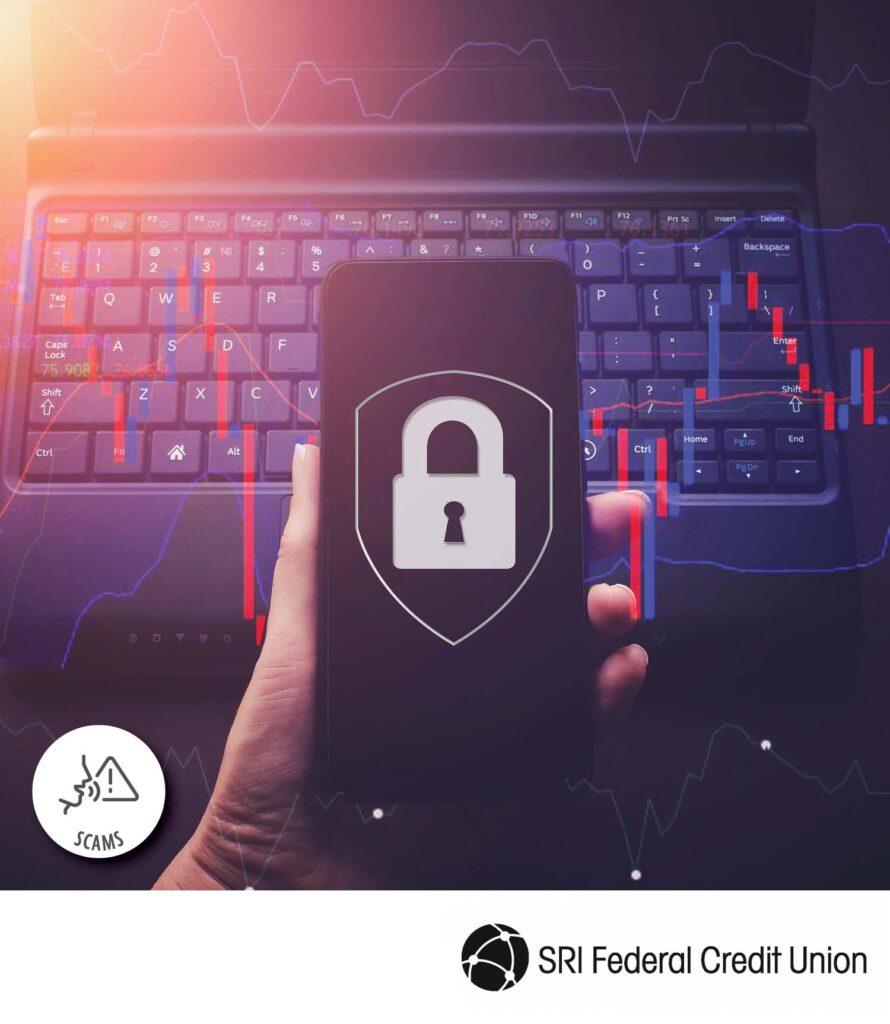Fraud
All You Need to Know About One-Time Password Scams
One-time passwords (OTPs) are a crucial security feature in our digital age by offering an extra layer of protection for online transactions and account logins. Unfortunately, though, scammers often try to hijack these codes to steal sensitive information, money, or both. Here’s what you need to know about one-time password scams and how to avoid them. What is a one-time password scam? One-time password (OTP) scams are designed to trick individuals into sharing their OTPs, which scammers then use to gain unauthorized access to accounts. Here are the various ways these scams go down: Whichever method is deployed in an attempt to steal your OTP, the scammer will then use it to access your accounts and possibly steal your identity Red flags Avoid falling victim to a one-time password scam by watching out for these red flags: Protect yourself Staying safe from OTP scams requires vigilance and adopting best practices for online security. Here are some steps you can take: If you’ve been targeted If you believe you’ve been scammed and/or have shared your OTP, take immediate action. First, change the passwords on all affected accounts and those that have similar login credentials. Next, inform the host organization of the account that it’s been compromised. They can help secure your account and guide you on additional steps to take. Monitor your accounts in the ensuing weeks and months, keeping a close eye on your financial statements and account activity for any unauthorized transactions. Finally, file a report with your local consumer protection agency, the Federal Trade Commission (FTC), and the Internet Crime Complaint Center (IC3). You may also want to consider identity theft protection at this time if sensitive information was compromised. One-time password scams can be difficult to spot and wreak massive damage. Use this guide to learn about one-time password scams and how to prevent yourself from falling victim. Stay safe!
All You Need to Know About Pig-Butchering Scams Category: Scams: Phishing Scams
You may have received a text or chat message in recent months about an attractive-looking investment opportunity. The message may have seemed to be sent mistakenly, but it’s all too real. In fact, it’s likely a pig-butchering scam.
Let’s take a look at these prevalent scams and how you can avoid falling victim. What is a pig-butchering scam? “Pig butchering” refers to the practice of fattening up a hog before slaughter. This scam, which originated in China, has been spreading around the world since COVID. In a pig-butchering scam, a fraudster creates a fake online persona, usually accompanied by an attractive photo and a luxurious lifestyle that is showcased in more photos to flesh out their story. Then they’ll initiate contact with a target on dating or other social media platforms, pretending to have reached out by mistake. Somehow, they’ll transition from there into a chat about the target’s life, family, work and more. To make themselves sound more believable, the scammer will invent details about their own life. They’ll use this to create a real rapport with the target until they’re actual friends, albeit with only a remote connection. Next, the scammer will start dropping hints about a fabulous investment opportunity. They’ll brag about their own success with this investment, sometimes even sharing screenshots of an alleged brokerage account with handsome earnings. They’ll try persuading the victim to invest in this “opportunity” as well, building on their growing relationship, until the victim agrees to join in the supposed opportunity. Once the victim agrees to go along with the investment, the scammer will offer to help them with the investing process. They may explain exactly how to wire money to a crypto wallet and, ultimately, to a bogus brokerage. Sometimes, they’ll recommend that the victim starts with a modest investment, which will soon show a (fabricated) gain. They may even allow the victim to withdraw some funds, which will convince the victim that the investment is genuine. Here’s where things get really ugly. Once the faux trust has been established, and the pig has been good and fattened, the scammer will persuade the victim to invest heavily in this “stock”. The victim, sure it is a legitimate opportunity that will only show gains, is more than happy to do so. They will even sometimes pursue mortgaging their house to get in on this investment. Other victims have liquidated their retirement savings or taken out loans. The scammer will continue to put pressure on the victim, watching gleefully as they pour more and more of their savings into the alleged investment. When the victim has sunk a significant amount of money into the investment, the scammer will suddenly disappear, leaving the victim with a useless “investment” and no way to recover their funds. Red flags Watch out for these red flags that can alert you to a possible pig-butchering scam: Stay safe Don’t get butchered! Follow these tips to stay safe. First, thoroughly research every investment opportunity before dropping any of your funds in it. Next, only use a registered and secure investment platform or app. Stay away from investments that guarantee quick, high returns and press you to act quickly. Be wary of any strangers who’ve contacted you “by mistake” and insist on pursuing the relationship. As with any scenario, never share your sensitive information with an unverified contact. If you believe you’ve been targeted by a pig-butchering scam, alert the FTC and your local law enforcement agencies. Do not engage with the scammer and be sure to block their number and/or email address from your devices. Finally, let your friends know the scam is happening in your circle. Stay safe!
Don’t Get Caught in an Investment Scam!
Investment is rarely without risk. Nearly every investment option carries with it the possibility of loss. What many don’t realize though, is that in addition to the typical risks, investing also carries the danger of falling prey to an investment scam. Investment scams can include promises of high return for minimal investments that never materialize, scammers posing as financial planners and offering useless – even harmful – advice for a hefty fee, and illegal securities offered as IRA investments. However, the most common investment scam is the Ponzi scheme. Let’s take a closer look at this scam and how you can avoid falling victim. What is a Ponzi scheme? Named for the original pyramid scammer Charles Ponzi, a Ponzi scheme is simply a sophisticated way that scammers rob from Peter to pay Paul. The orchestrator of the scheme will promise high returns to investors, often through a fictitious investment opportunity or business venture. Instead of using investments to generate profit, though, the scammer uses these funds to pay returns to their earlier investors. This creates the illusion of a profitable enterprise. The scheme grows, with more investors joining, and the scammers at the top of the pyramid making the most money. Eventually, the entire house of cards comes toppling down, with investors losing significant amounts of money. How to spot a Ponzi scheme Look out for these key characteristics of a Ponzi scheme to ensure you don’t get caught: Protect yourself from Ponzi schemes Ponzi schemes are fairly common, but with a little bit of knowledge and awareness, you can protect yourself from falling victim. Here’s how to protect yourself from Ponzi schemes: If you’ve been targeted If you believe you’ve been targeted by a Ponzi scheme or investment fraud, report it to the appropriate authorities as soon as possible so they can do their part in apprehending the criminals. You can alert the Securities and Exchange Commission (SEC), the Financial Industry Regulatory Authority (FINRA) and the Federal Trade Commission (FTC) as well as your local law enforcement agencies. Ponzi schemes and other investment scams prey on the universal desire for easy money, but the only beneficiaries from these ruses are the scammers at the top of the pyramid. Stay alert, and stay safe!
Don’t Get Caught in an Emergency Scam!
It’s your grandson on the line and he’s in deep trouble! He’s telling you he’s been kidnapped for ransom, or perhaps he’s in trouble with the police and needs money for bail. Whatever the “emergency,” he’s asking you to wire money ASAP! You may already be calculating how much you can send, but pause for a moment, because you’re likely being scammed. Here’s what you need to know about emergency scams and how to protect yourself. How the scams play out In an emergency scam, a target receives a phone call, email or text message allegedly from a close relative. The caller claims to have been caught in hot water, which can be anything from a kidnapping, an issue with the police, a car accident or even getting stuck overseas with no money. Sometimes, the call will include another party, such as the “kidnappers” or “police officers” who are supposedly involved in the emergency. The caller will then ask the target to send over money as soon as possible using a wire transfer or prepaid debit card. They’ll also demand that this information not be shared with any other family members. They’ll claim to be embarrassed that they’ve gotten into this situation and ask that you honor their request to keep it quiet. While emergency scams are commonly played out with a grandparent of an alleged caller, they can also target parents, uncles, aunts, and siblings of the “caller”. They may even call posing as a friend or old neighbor of the target in an attempt to lure them into the scam. Unfortunately, if the target follows the directions of the caller and sends over money, these funds will go directly into the pockets of a scammer. How emergency scams lure victims If you’re reading the description of an emergency scam and thinking that no one could possibly fall for one of these ruses, think again. Scammers use several convincing methods to convince their targets that they are actually the callers they claim to be. First, the scammer will troll the target’s social media pages to learn their name, home address, job details, date of birth, and any other details about their life. Sometimes, they’ll hack the target’s email account to get this information. Next, scammers may pretend to be an “authority figure” who allegedly authenticates the caller’s story. They may pose as a lawyer, police officer, or even a doctor. Victims are often pulled into the scam when they hear an alleged authority figure on the call with their relative. Finally, some scammers go the extra mile by using AI to clone the “caller’s” voice. They simply scrape an audio clip they find on the internet and then use a voice-cloning program to make the emergency sound legitimate, even though it never happened. Red flags Here are some signs that can alert you to the possibility of an emergency scam: Protect yourself Follow these tips to keep yourself safe from emergency scams: Emergency scams play on the target’s emotions and assume they will act quickly to save their relative from a hairy situation. Stay calm and alert, and use the information here to avoid getting caught in an emergency scam.
All You Need to Know About Spoofing Scams
Scammers have been at their game since time immemorial, but modern technology has weaponized them in new and dangerous ways. In particular, spoofing has become more sophisticated and difficult to spot. Let’s take a look at spoofing, how it works, and red flags that can alert you to a possible spoofing scam What is spoofing? Spoofing is the criminal act of disguising a communication from an unknown source to appear as if it’s being sent from a trusted and known contact. The ultimate goal of spoofing is to get the target to share their sensitive information and/or their money with the scammer. For example, a spoofer may pretend to represent a victim’s credit card company and lead them into sharing their account details. Types of spoofing Cybercriminals have a variety of ways to pull off their spoofing. Here are the more common forms: In email spoofing, an attacker sends an email message appearing to be from a known or trusted source. The emails typically include links to harmful websites or attachments that will infect the victim’s device with malware. Alternatively, the scammer may use social engineering to persuade the recipient to share sensitive information. In IP spoofing, an attacker tries to gain access to a system by sending messages via a bogus or spoofed IP address, which appears to be from a recognized, trusted source, such as one on the same internal computer network. The spoofed IP address will mask the true source, which is a third party that is out to infect the victim’s device with malware and steal their information. Here, attackers make a phone call to a target that appears to be from a known caller. The scammer will often pose as the victim’s bank or credit union. The victim, believing they are speaking with a representative of their financial institution, will disclose their account information and even passwords, which can lead to the scammer emptying their accounts and/or stealing their identity. Sometimes, the scammer will provide the victim with a phone number to call, which will allegedly connect them with their bank or credit union. This number, of course, will only connect the victim to a scammer. 4. Facial spoofing In this most recent form of spoofing, a scammer uses a photo or video of a target’s face to simulate their facial biometrics. This enables them to unlock accounts that can only be opened via facial recognition. 5. Website spoofing In website spoofing, a scammer will create a bogus site that looks just like a reputable website that the victim often visits. Attackers will lure victims to this site for the purpose of stealing their login credentials and personal information. In this scam, also known as smishing, a victim will receive a text message on their personal device appearing to have been sent via a trusted source, such as the victim’s financial institution, place of work, or doctor’s office. The text will ask the victim to share personal information. They’ll often do so, mistakenly believing the sender of the text message to be who they claim to be. There are three players involved in MitM attacks: the victim, the party the victim is attempting to communicate with, and the “man in the middle”, otherwise known as the scammer who is intercepting the communications. In these spoofs, the scammer tries to eavesdrop on the interaction between the victim and the other party. Alternatively, they may try to impersonate the other party to get at the victim’s personal information. Deepfakes and spoofing Deepfakes is a relatively new and dangerous tool for spoofers. A deepfake is a fake image, video, or audio clip that has been edited to appear authentic. For example, a scammer may create a deepfake video using an image and audio recording of a celebrity and make it appear as if they are telling you to open a link or support a specific cause. Scammers use deepfakes to trap victims and appear as if they represent a trusted source. Protect yourself Spoofing is a formidable danger for consumers across the economic spectrum, but with the right tools and knowledge, you can avoid falling victim to these scams. Here’s how to protect yourself from a spoofing attack: Red flags Look out for these red flags that can alert you to a possible spoofing attack: If you’ve been targeted If you believe you’ve shared sensitive information with a scammer through a spoofing attack, there are steps you can take to mitigate the damage. First, contact your financial institution to let them know about the attack. You may place a credit alert or a credit freeze on your accounts, making it difficult or impossible for a scammer to open a line of credit or take out a loan in your name. If you believe your identity has been stolen, check out identitytheft.gov to learn what your next step should be. Finally, change the passwords on all your accounts to protect them from further attacks. Spoofing has gotten a lot more dangerous in recent years, but with proper awareness and basic protective measures, you can avoid getting scammed. Use the tips outlined here to stay safe.
6 Ways to Tell if a Website is Safe
In today’s digital age, where we rely on the internet for everything from furniture shopping to staying informed and entertained, safeguarding ourselves online is essential. The online landscape is filled with fraudsters using advanced techniques to exploit vulnerabilities. Accidentally stumbling upon an unsafe website can expose you to malware, including spyware that steals sensitive financial data and ransomware that locks your device and demands payment for its release. These threats can lead to devastating consequences such as drained bank accounts, fraudulent loans taken out in your name, and even identity theft. It’s crucial to stay vigilant and take proactive measures to protect yourself from online scams and threats. Fortunately, with the right steps and protective measures, you can easily avoid unsafe websites. Here are six ways to tell if a website is safe and secure. Secure websites like ours will have an SSL, or a Secure Sockets Layer. An SSL is a digital certificate that verifies a website is authentic and will automatically encrypt all personal information and financial data. There are two primary indicators of an SSL, both of which are easily visible in the site’s URL that’s displayed in your web browser: It’s important to note that most browsers will hide the beginning of the URL, which generally includes these two indicators of an SSL. However, you can easily read the entire URL by copying and pasting it to another tab, a Microsoft Word document or a Google Drive doc. Some browsers will also reveal this info if you hover over the left-hand side of the URL. In addition, clicking on the padlock icon will reveal more information about the site’s security. Next, look at the URL carefully. Are there any misspelled words? Does the URL mimic a well-known site or retailer? Scammers will often lure victims by creating bogus sites that look like they represent well-known companies. However, careful scrutiny of the URL will reveal basic spelling errors that give the scam away. You may also find that the site, which allegedly represents a famous company, belongs to a public domain, such as Gmail or Yahoo, as opposed to a private business domain, like Amazon.com. This, too, will tell you that you’re likely looking at a scam. Legitimate companies are eager to have you connect with them for any reason. They’ll generally display their contact information on their home page or provide a link through which to easily access it. Scammers, on the other hand, try to keep themselves as invisible as possible. You likely won’t find any tabs that say “Contact Us” or “About Us” on their website. You may find their email address on their site, but a phone number and street address will be glaringly absent or clearly made up. Authentic companies will take the necessary steps to make a professional impression on visitors to their website. Scammers, on the other hand, will not. Use their carelessness to your advantage by looking out for spelling mistakes and typos throughout the site. You can also be on the lookout for cheap design elements, including images that are clearly not original and logos that are poorly created. Each of these clues can signify a scammy website. If you enter a site’s URL into your computer and a warning pops up to alert you that the site you’re attempting to access is not safe, do not ignore it. You can choose to advance to this site, or back out. Unless you’re absolutely sure the site is secure despite the warning, it’s best not to choose to advance to the site. Websites that are flagged by devices generally do not pass the most basic security tests as detailed above. Scammy websites will try to trick you into downloading malware through pop-ups and embedded links. Sometimes, the links will be used to generate ad revenue through clicks. Whatever the intent, it’s important to know that reputable sites will not flood your screen with pop-ups and random links for you to click. If you encounter a site like this, you’re likely looking at a scam and should exit as soon as possible. Then, close your browser and have your security system run a scan on your device to find any possible vulnerabilities or safety breaches. Don’t get stuck on an unsafe site! Use the tips here to stay safe.
Don’t Let The P2P Scams In The Door
P2P platforms, like Zelle, Venmo and PayPal, have made life so much easier for many consumers. Paying your friend back for the $20 you borrowed while at the mall, splitting a meal and purchasing a shared gift are now as easy as a few quick screen swipes. Unfortunately, though, P2P scams are rampant and varied. Also, once money is transferred through a P2P service, it’s usually gone for good.
Here are six P2P scams to beware of:
Mystery money
In this P2P scam, a stranger “accidentally” sends the target money and then reaches out to them, asking for their money back. The target will see these funds in their P2P account and willingly return the funds. Unfortunately, though, because this money was added to the target’s account using a stolen credit card or checking account, the platform will ultimately flag the transaction as fraud and remove the funds. If the victim already forwarded the funds to the scammer, the platform will hold them accountable for the funds and potentially block their account.
Hidden credit card fraud
In this P2P scam, a fraudster will purchase an item listed on Craigslist or a similar site using a P2P service. They’ll pick up the item, or have it shipped to their home, and they’ll never be heard from again. Meanwhile, the P2P platform will eventually recognize that the funds for the purchase were fraudulently sourced, and will take the money back from the seller. The victim will be left without the item – and have no money to show for it.
Fake customer representative
Customer rep scams are an old story, but their appearance in the P2P world is only as old as these payment platforms. In this scam, a target experiencing difficulty with a transaction on a P2P platform inquires about assistance on social media. A scammer sees that inquiry, and then reaches out to the target, claiming to represent the platform and offering their assistance. If the target falls for the ploy, they’ll be directed to a bogus support site where they’ll be asked to enter their account details or credit card info. This, of course, leaves them open to identity theft and financial loss.
Utility scams
Utility scams pulled off via P2P platforms follow the same script as the classic scam in which an alleged rep from a utility company reaches out to a target, claiming their service will be shut off unless a payment is immediately made. In this variation, the scammer insists on payment via a P2P service. Unfortunately, once the payment is made to this “service rep,” it can be impossible to reclaim the funds.
Password scam
In this P2P scam, an alleged representative of a credit union or bank will reach out to a target via text, asking if they approve a recent large P2P transfer from their account. The target will respond with a quick “no.” Next, the scammer will call the victim, again posing as a rep of their financial institution, and offer to assist them in reclaiming the allegedly frauded money. To do so, the scammer claims, the victim will need to share their Zelle login credentials. Unfortunately, if the victim shares the one-time passcode, the scammer will have the info they need to change the password and access the victim’s Zelle account. The scammer can now send themselves money through the victim’s Zelle account.
Bogus receipts
In this variety of a P2P scam, a scammer will insert themselves into a legitimate P2P transaction by digitally manipulating a screenshot to make it appear as if they have completed a part of an ongoing deal and insisting that you now owe them money. In truth, though, the transaction was never completed and, if you send the money, you’ll be sending it directly to a scammer’s P2P account.
Stay safe
Follow these rules when using P2P platforms:
- Only send and accept funds from people you personally know and trust.
- Always confirm that you’re interacting with the correct person by verifying their phone number at every stage of the P2P transaction process.
- Call the P2P platform’s customer service number directly to resolve errors. Similarly, reach out to SRI Federal Credit Union directly if you receive notification of an allegedly frauded account.
- After completing a P2P transaction, check your checking account to confirm you’ve actually received the promised funds.
- P2P services are enormously convenient, but each transaction carries the risk of fraud. Use the tips outlined here to stay safe from P2P scams.
Protecting Your Finances: How to Prevent Fraud in Your Credit Union Accounts
Hey there, savvy money manager! We’re living in an era where our wallets have gone digital, making it super convenient to handle our finances. But you know what else is on the rise? Yep, you guessed it – sneaky fraudsters and cyber tricksters. They’re eyeing your credit union and bank accounts, access to online banking and more. No worries, though! We’ve got your back with tips to help you keep your hard-earned cash safe and sound.
1. Be a Password Picasso:
Time to ditch those “123456” passwords, folks. Cook up something unique for each account – a mix of caps, numbers, and symbols. Let’s make those passwords as tough to crack as your grandma’s secret cookie recipe! And hey, while you’re at it, sprinkle in some two-factor authentication for that extra layer of security.
2. Play Account Detective:
Make it a habit to give your credit union statements, online banking moves, and HELOC transactions the eagle eye treatment. If anything looks fishy, call it out! Set up alerts to ping your radar whenever there’s a big change in your accounts – that’s your cue to go all Sherlock Holmes.
3. Keep Things Updated:
You know those software updates that pop up on your screen? Don’t swipe them away like last year’s fashion trends. They’re your secret weapon against sneaky hackers. Stay up-to-date on your devices, and those virtual bad guys will have a harder time knocking on your digital door.
4. Side-Eye Those Emails and phone calls:
Phishing is like the oldest trick in the book. These scammers send emails that look legit but aren’t. If an email asks for your personal info, like passwords or account numbers, don’t fall for it! Beware the crafty tactics of fraudsters who can spoof the phone numbers of your trusted financial institutions. These tricksters might call you, appearing to be your bank, credit union, or a retailer like Amazon, but don’t be fooled! Remember, authentic financial institutions will never ask you for verification codes or sensitive login information over the phone and retailers like Amazon will never transfer you over to your financial institution’s fraud department. If anyone does, it’s a major red flag. Stay savvy and keep your guard up against these shrewd scams to ensure your hard-earned money remains safe and secure. Remember, your financial intuition will never slide into your inbox or call you asking for a verification code to snoop around your account.
5. Safe Networks Only:
Picture this: you, sipping coffee at a cafe, handling your online banking on their free Wi-Fi. Now hit pause – that’s a prime-time spot for hackers to swoop in. Stick to secure networks for your money matters. Public Wi-Fi might be free, but the cost of compromised info is way too high.
6. Hide Your Docs:
Got important papers lying around? Lock them up like treasure! Keep physical copies of your bank docs, loan agreements, and IDs in a safe spot. For digital files, it’s all about the encryption. Password-protect those babies and keep them hidden from prying virtual eyes.
7. School Yourself:
Knowledge is power, folks! Your credit union and bank have your back with resources to school you on the latest fraud moves. Stay in the loop and read up – it’s like giving your brain a superhero cape against cyber baddies.
8. Sneak a Peek at Your Credit:
Peeping into your credit report isn’t just fun – it’s smart. Scan for anything odd. Did someone open a credit card in your name? Nope, not on your watch! Grab your free yearly credit reports and give ’em a good old once-over.
9. Be the Limit Setter:
Ever heard of setting transaction limits? It’s like locking your financial doors. Check if your credit union or bank lets you do this. If a scammer tries to hit you with a huge transaction, they’ll hit a brick wall instead.
10. Report, Report, Report:
Remember this golden rule: if you see something funky, say something! If anything smells off in your accounts, call your financial intuition right away. And remember, they’ll never text you for a verification code to hop into your account – that’s like giving a stranger your house keys.
There you have it, money maestro! With these easy-peasy steps, you’re arming yourself against the tricksters of the digital realm. So keep those passwords strong, your eyes sharp, and your financial instincts on point. Your money deserves nothing less than Fort Knox-level protection!
Device Advice: How to Keep Your Phone Safe from Fraud
Smartphones are the millennial’s answer to the disorganized life. You can buy practically anything with just a few swipes, schedule your appointments and store all your photos and home videos in this one, convenient location. [You can also manage your accounts, check your balance and deposit checks through SRI Federal Credit Union’s mobile banking app and/or website]. Unfortunately, all of that convenience comes at a price: Your mobile devices pose an inherent risk to your security if they fall into the wrong hands. The good news is, there are ways to protect your phone and your information from fraud. Here are 6 tips for keeping your device safe and secure. If your entire life is on your phone, you run the risk of giving up complete access to your identity if your phone is stolen or misplaced. The best way to prevent this from happening is to have a lock on your screen. Opt for a physical lock if possible, such as fingerprint or face recognition; meaning no amount of automated password inputs can open your phone. Consider installing a tracking device/app on your phone as well to help you locate it and retrieve or erase the data if it gets misplaced. Finally, adjust your phone’s lock settings so the screen automatically locks after the shortest amount of time being idle. Passwords should be a blend of letters with varied capitalization use, numbers and symbols. Be sure to use a different password for each of your devices, apps and other online accounts, and to change up your passwords approximately every six months. Don’t store the info for all your passwords in one location on your phone or have your device “remember” your passwords. If you find it challenging to recall all your passwords and login credentials, you may benefit from a password manager like Sticky Password or LastPass. Follow these rules for safe online browsing: The first thing many people do when they sit down in a restaurant, at a bar, or almost anywhere, is search for free Wi-Fi access. It’s an easy way to save on data, so why not? Simply put, using public Wi-Fi makes you vulnerable to hacking. It’s best not to use public Wi-Fi at all, especially when banking online. To keep your device safe while using public Wi-Fi, connect to a virtual private network (VPN). Changing your virtual network will protect your location and sensitive information from scammers. In addition, be sure to keep your own Wi-Fi locked to prevent strangers from accessing your network. 5. Encrypt your data Your phone stores loads of your PII, which can make you vulnerable to identity theft if it’s stolen or misplaced. Protect your information by encrypting all sensitive data on your phone. Most phones have encryption settings, which you can enable easily. To encrypt data on an Apple device, go to the settings menu, choose “Touch ID & Passcode” from the pop-up menu and follow the prompts to unlock your phone. When you’ve gained access, scroll down until you see the words “Data Protection”. If this feature is not enabled, enable it now. Your data is now unreadable. If you own an Android phone, charge your phone at least 80% and unroot it. Next, go to your security settings and choose “Encrypt Phone” from the menu. Encryption may take an hour or more. The same antivirus programs that protect your laptop can also keep your phone secure. Check out security programs for phones, like McAfee or Norton 360. Antivirus software will provide your phone with protection from security breaches and attacks from scammers. If you believe your device has been compromised, and/or you’re vulnerable to identity theft, notify SRI Federal Credit Union immediately. Alert the FTC as well. Smartphones bring a lot of convenience into our lives, but they carry an inherent security risk. Use the tips outlined here to keep your device safe from fraud.
What is the Dark Web?
Q: I’ve heard of the dark web, but I never understood what this term means. What is the dark web? How is it accessed? Is there any way to keep my information out of its depths?
A: The dark web is the deepest layer of the internet that isn’t visible to the average browser. Unfortunately, its name is a perfect description of its function, as the dark web is full of illegal activities and crimes. Let’s take a closer look at the dark web and how you can protect your information from being caught in its trap. What is the dark web? The internet has been likened to an iceberg. There is very little of it that is truly visible above the surface, but it is enormous, dark and deep underneath. There are three basic components of the internet: Despite its name, not all of the activity that takes place on the dark web is illegal. The deepest part of the internet also provides a platform for communication and commerce among people living in countries that have heavy censorship over online activity. In addition, the dark web was originally used by the United States Department of Defense to communicate anonymously. Unfortunately, though, the dark web remains a hotbed of criminal activity. Loads of illegal trade takes place through the dark web, including drugs, firearms, counterfeit money, subscription credentials and personal information of thousands of targets. The inherent anonymity of the dark web allows hackers and scammers to roam free without fear of being caught. How does the dark web work? The dark web, and by extension the Tor browser, uses a technology known as “onion routing.” This technology uses multiple layers of encryption and redirection to assure anonymity for every browser. When a browser tries to access a site on the dark web, its information will be routed through thousands of relay points, making it impossible to identify and trace. How can I protect myself from the dark web? It’s important to take preventative measures to protect your information from the dark web. Here’s how: The dark web is fraught with danger and impossible to trace but there are ways to protect your information. Use the tips outlined here to stay safe.














